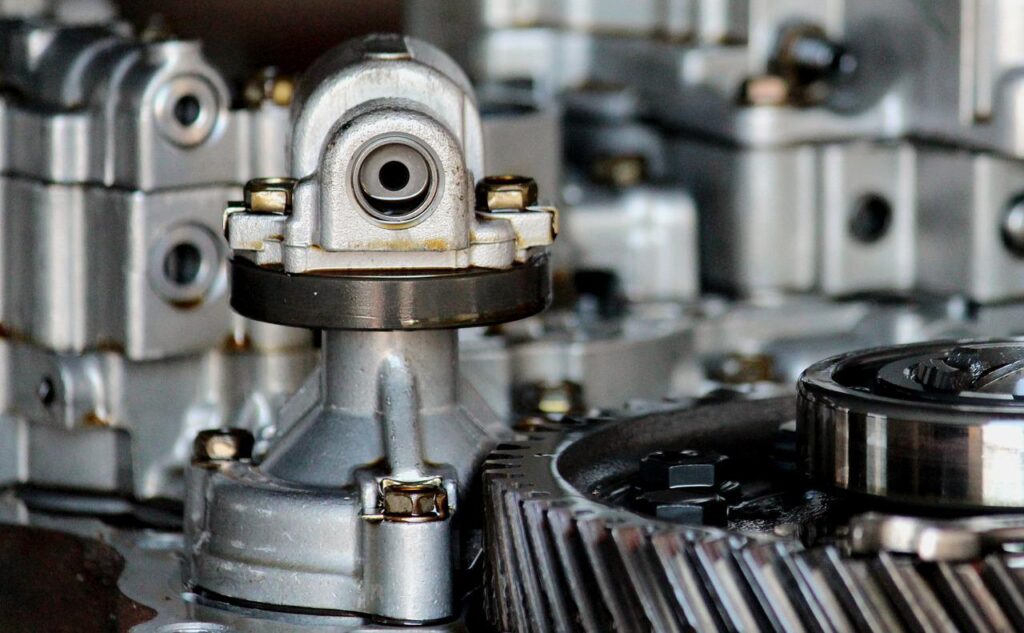Got a transmission fluid leak? If so, your job is to find the source of the transmission fluid leak. Driving with dirty transmission fluid is risky, and if your transmission fluid is low, the transmission isn’t able to work correctly.
Doug Yates Towing & Recovery offers towing services when you are stuck on the side of the road! Let’s discuss some tips to keep your transmission running smoothly — so you don’t get stuck on the side of the road.
What Is Transmission Fluid?
Transmission fluid is the liquid used in a vehicle’s transmission, and it’s what keeps the gears lubricated and cool and provides a barrier between moving parts inside the system.
It is usually dyed red or green, making it easier for mechanics to see when checking fluid levels. The color can vary depending on the manufacturer, but it is generally red or green.
What Is Transmission Fluid’s Purpose?
The main job of transmission fluid is to keep all of the moving parts inside a vehicle’s transmission lubricated and cooled. Without this vital liquid, your car will not be able to run correctly. If you don’t change your fluid regularly, your car will eventually fail because the gears will grind against each other without proper lubrication.
Transmission fluid also acts as a sealant between these moving parts within your vehicle’s transmission system, preventing leaks. If there were no sealant inside your transmission system, there would be no way to stop oil and other fluids from leaking!
When Do You Change Transmission Fluid?
The transmission fluid lubricates and cools the gears, seals, and bearings, and it also provides a medium for transmitting hydraulic pressure from the pump to the valve body. The fluid level should be checked at each vehicle inspection. Still, you should also change transmission fluid when contaminated with contaminants such as metal particles or when it begins to deteriorate due to age.
It should be changed every 30-60k miles or once a year, depending on how you drive your car (city vs. highway). If you drive under ideal conditions, you can go longer between changes (up to 100k miles), but it may need to be done more often if you drive in stop/go traffic or over mountain roads.
How To Check For Problems
If you want to check how much transmission fluid is left in your car, turn off the engine and let it cool down for 30 minutes or so. Then pop open your hood and find the dipstick on the top of the transmission pan (it will have an “F” printed on it). Pull up on the handle to remove it and wipe off excess oil with a clean rag before inserting it back into its proper spot. Now remove the dipstick and check to see if there is any color on it at all – if so, then there is an issue with your transmission!
Check The Transmission Fluid’s Color
Transmission fluid is one of the most important fluids to check on your car. As a general rule, you should check it at least once every 15,000 miles or before traveling long distances. If you’re not sure how much transmission fluid your car needs, ask your mechanic to check it.
The color of the fluid can tell you a lot about its condition. If it’s red or dark brown, there’s too much friction inside the transmission, and it needs to be replaced soon. If it’s light brown or orange, there’s enough fluid, but it might be low on additives, leading to problems.
How To Check Transmission Fluid
It’s essential to regularly check your car’s transmission fluid (at least once per month) to help you avoid problems with your car’s transmission later on down the road. The easiest way to check your car’s transmission fluid is by removing its dipstick and wiping off any excess oil with a clean rag or paper towel before inserting it again. Suppose any visible sludge or a burnt smell comes from your vehicle when you start it after driving for an extended period. In that case, the chances are that there is something wrong with your car’s transmission, and it should be inspected by a certified mechanic as soon as possible.
Checking For Debris
Transmission fluid is the lifeblood of your car’s system. Without it, you can’t shift gears or drive your car. If you don’t maintain your vehicle correctly and change its fluid as needed, you could have significant problems.
Transmission fluid is designed to handle high temperatures and pressure. If it gets contaminated or overheated, it can start to break down and cause damage to your transmission. It’s essential to check the color of the fluid regularly so that you know when it needs to be changed.
The fluid color can indicate any problems with your car’s system. One of the first signs of a problem is if there are black or brown particles floating in the liquid – this means that debris has gotten into the system and damaged it.
If your transmission isn’t working correctly, you may experience some issues with shifting gears or slow acceleration when driving at highway speeds. For example, suppose you notice that your vehicle seems to “slip” when accelerating on highways. It could be caused by low fluid levels in your transmission system (prevalent on manual transmissions), leading to permanent damage and costly repairs.
Need Roadside Assistance?
Being stuck on the side of the road is inconvenient and dangerous. Doug Yates Towing & Recovery provides roadside assistance to ensure you’re back on the move in no time, with state-of-the-art tow trucks and the best roadside service professionals.
Call today to speak with a representative about our roadside service options or other services.

